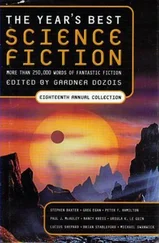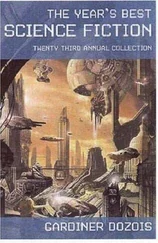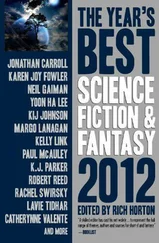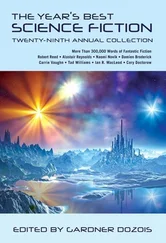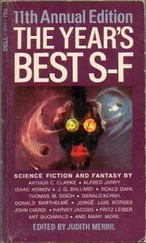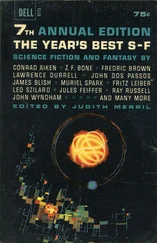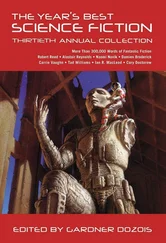THE VERY BEST OF THE BEST
35 YEARS OF THE YEAR’S BEST SCIENCE FICTION
Edited by Gardner Dozois
Time that is intolerant
Of the brave and innocent,
And indifferent in a week
To a beautiful physique,
Worships language and forgives
Everyone by whom it lives.
— W. H. AUDEN
I’d like to thank all the people who have helped me assemble these volumes over the years; Susan Casper, Sean Swanwick, and Vaughne Lee Hanson for technical support; too many authors and editors to list; and thanks to my own editors, Jim Frenkel, Stuart Moore, Gordon Van Gelder, Bryan Cholfin, and, especially, Marc Resnick.
The first volume of this series, The Year’s Best Science Fiction: First Annual Collection , was published way back in 1984, a time so distant and so different that it might as well be another world, and one that would probably seem as alien as any fictional Mars to many of today’s young readers. As I type these words, it’s 2017, with The Year’s Best Science Fiction: Thirty-Fifth Annual Collection about to come out. Although I already edited The Best of the Best in 2005 and The Best of the Best, Volume 2: 20 Years of the Best Short Science Fiction Novels in 2007, it seemed time for another such collection—so here it is, covering the years from 2003 to 2017, and from The Year’s Best Science Fiction: Twentieth Annual Collection to The Year’s Best Science Fiction: Thirty-Fifth Annual Collection .
Over the entire span of the series, from 1984 to 2017, we’ve reprinted more than six hundred stories, from authors from all around the world, reprinted from magazines, anthologies, electronic magazines, novella chapbooks, and podcasts. I hope that you’ve enjoyed and will enjoy some of them. If you do, the credit goes to the authors who wrote them, and the editors who were shrewd enough to buy them in the first place. They did the real work. All I’ve done, over the years, is to offer you a chance to read the stories that I myself enjoyed.
The Potter of Bones
ELEANOR ARNASON
Eleanor Arnason published her first novel, The Sword Smith , in 1978, and followed it with such novels as Daughter of the Bear King and To the Resurrection Station . In 1991, she published her best-known novel, one of the strongest novels of the nineties, the critically-acclaimed A Woman of the Iron People , a complex and substantial novel which won the prestigious James Tiptree Jr. Memorial Award. Her short fiction has appeared in Asimov’s Science Fiction , The Magazine of Fantasy & Science Fiction , Amazing , Orbit , Xanadu , and elsewhere. Her other books include Ring of Swords and Tomb of the Fathers , and a chapbook, Mammoths of the Great Plains , which includes the eponymous novella, plus an interview with her and a long essay, and a collection, Big Mama Stories . Her story “Stellar Harvest” was a Hugo Finalist in 2000. Her most recent books are two new collections, Hidden Folk: Icelandic Fantasies , and a major SF retrospective collection, Hwarhath Stories: Transgressive Tales by Aliens . She lives in St. Paul, Minnesota.
Here she takes us to a strange planet sunk in its own version of a medieval past for a fascinating study of the birth of the Scientific Method… and also for an intricate, moving, and quietly lyrical portrait of a rebellious and sharp-minded woman born into a time she’s out of synch with and a world that refuses to see what she sees all around her.
The northeast coast of the Great Southern Continent is hilly and full of inlets. These make good harbors, their waters deep and protected from the wind by steep slopes and grey stone cliffs. Dark forests top the hills. Pebble beaches edge the harbors. There are many little towns.
The climate would be tropical, except for a polar current which runs along the coast, bringing fish and rain. The local families prosper through fishing and the rich, semi-tropical forests that grow inland. Blackwood grows there, and iridescent greywood, as well as lovely ornamentals: night-blooming starflower, day-blooming skyflower and the matriarch of trees, crown-of-fire. The first two species are cut for lumber. The last three are gathered as saplings, potted and shipped to distant ports, where affluent families buy them for their courtyards.
Nowadays, of course, it’s possible to raise the saplings in glass houses anywhere on the planet. But most folk still prefer trees gathered in their native forests. A plant grows better, if it’s been pollinated naturally by the fabulous flying bugs of the south, watered by the misty coastal rains and dug up by a forester who’s the heir to generations of diggers and potters. The most successful brands have names like “Coastal Rain” and emblems suggesting their authenticity: a forester holding a trowel, a night bug with broad furry wings floating over blossoms.
This story is about a girl born in one of these coastal towns. Her mother was a well-regarded fisherwoman, her father a sailor who’d washed up after a bad storm. Normally, a man such as this—a stranger, far from his kin—would not have been asked to impregnate any woman. But the man was clever, mannerly and had the most wonderful fur: not grey, as was usual in that part of the world, but tawny red-gold. His eyes were pale clear yellow; his ears, large and set well out from his head, gave him an entrancing appearance of alertness and intelligence. Hard to pass up looks like these! The matrons of Tulwar coveted them for their children and grandchildren.
He—a long hard journey ahead of him, with no certainty that he’d ever reach home—agreed to their proposal. A man should be obedient to the senior women in his family. If they aren’t available, he should obey the matrons and matriarchs nearby. In his own country, where his looks were ordinary, he had never expected to breed. It might happen, if he’d managed some notable achievement; knowing himself, he didn’t plan on it. Did he want children? Some men do. Or did he want to leave something behind him on this foreign shore, evidence that he’d existed, before venturing back on the ocean? We can’t know. He mated with our heroine’s mother. Before the child was born, he took a coastal trader north, leaving nothing behind except a bone necklace and Tulwar Haik.
Usually, when red and grey interbreed, the result is a child with dun fur. Maybe Haik’s father wasn’t the first red sailor to wash up on the Tulwar coast. It’s possible that her mother had a gene for redness, which finally expressed itself, after generations of hiding. In any case, the child was red with large ears and bright green eyes. What a beauty! Her kin nicknamed her Crown-of-Fire.
When she was five, her mother died. It happened this way: the ocean current that ran along the coast shifted east, taking the Tulwar fish far out in the ocean. The Tulwar followed; and somewhere, days beyond sight of land, a storm drowned their fleet. Mothers, aunts, uncles, cousins disappeared. Nothing came home except a few pieces of wood: broken spars and oars. The people left in Tulwar Town were either young or old.
Were there no kin in the forest? A few, but the Tulwar had relied on the ocean.
Neighboring families offered to adopt the survivors. “No thank you,” said the Tulwar matriarchs. “The name of this bay is Tulwar Harbor. Our houses will remain here, and we will remain in our houses.”
Читать дальше


